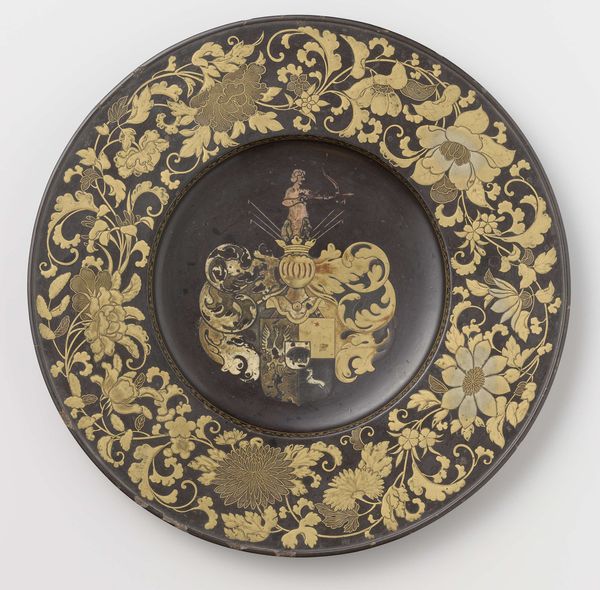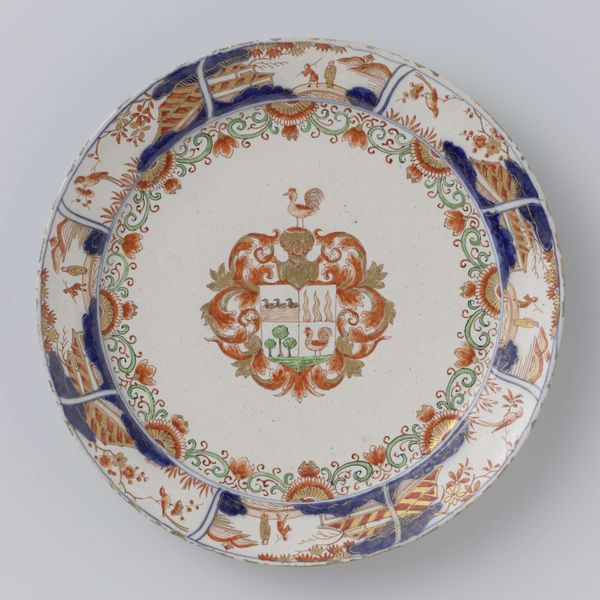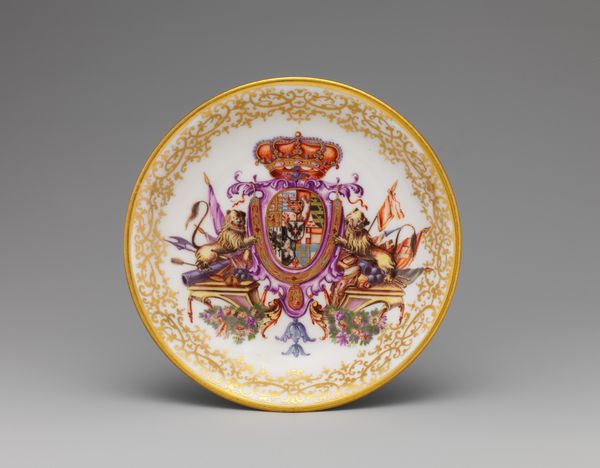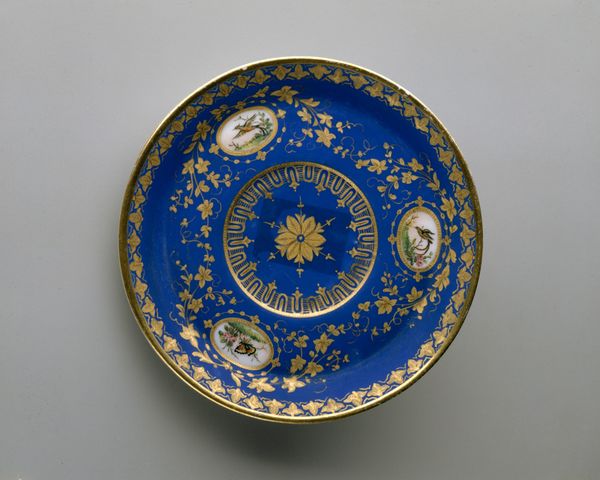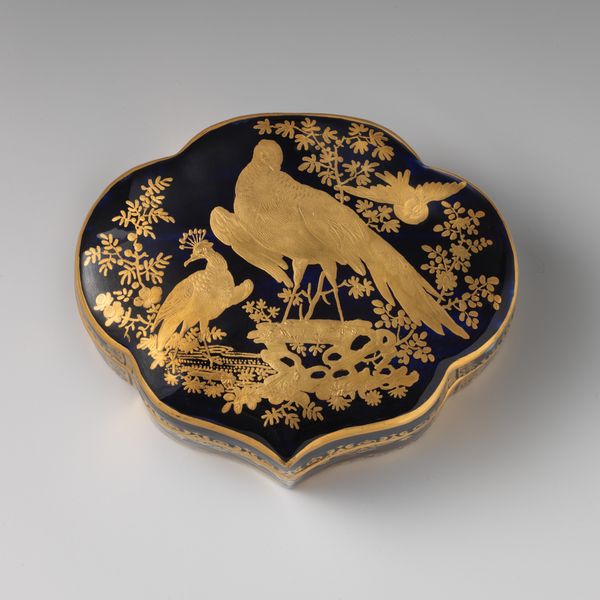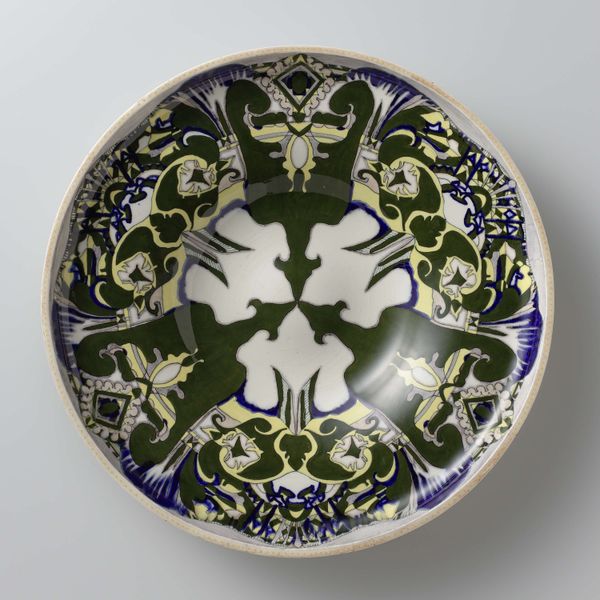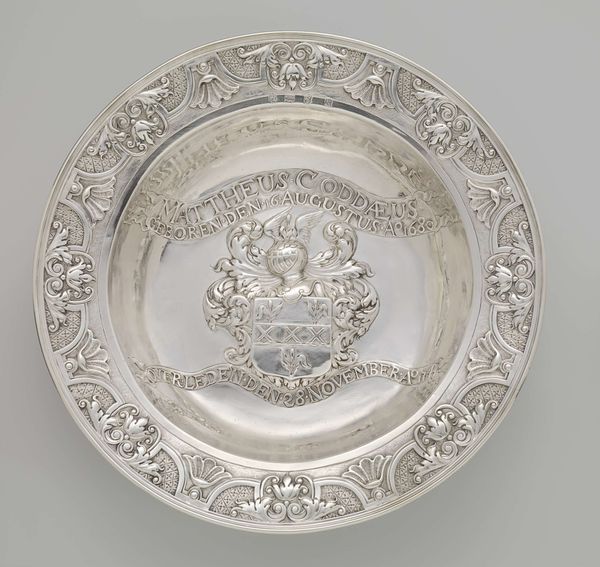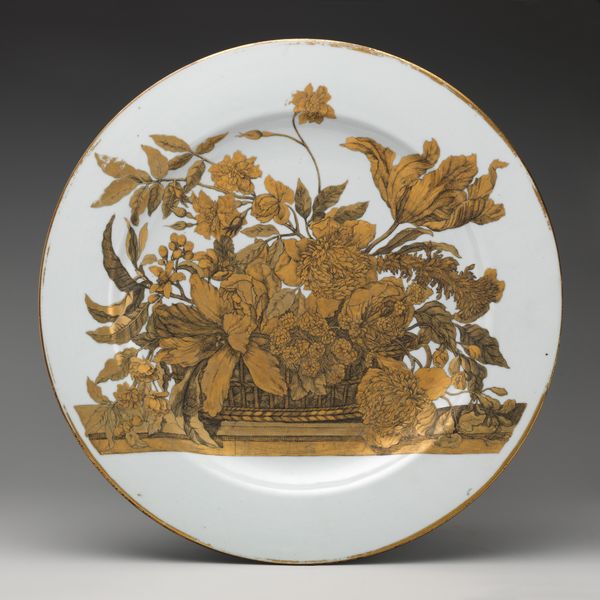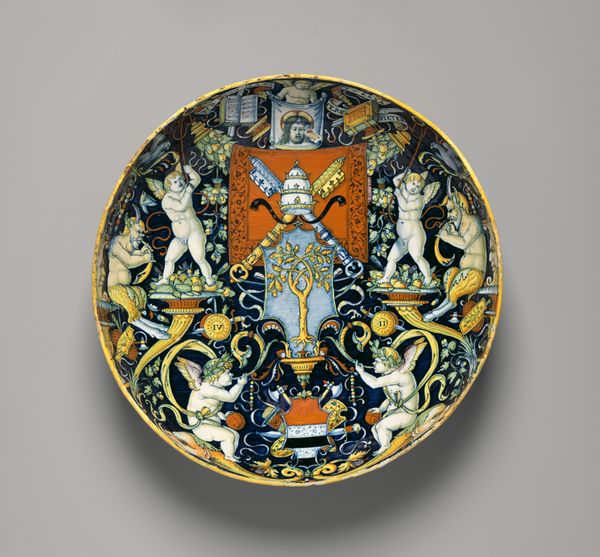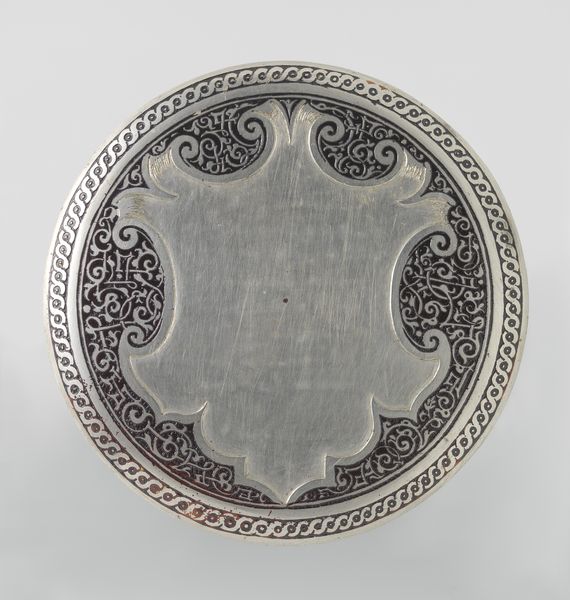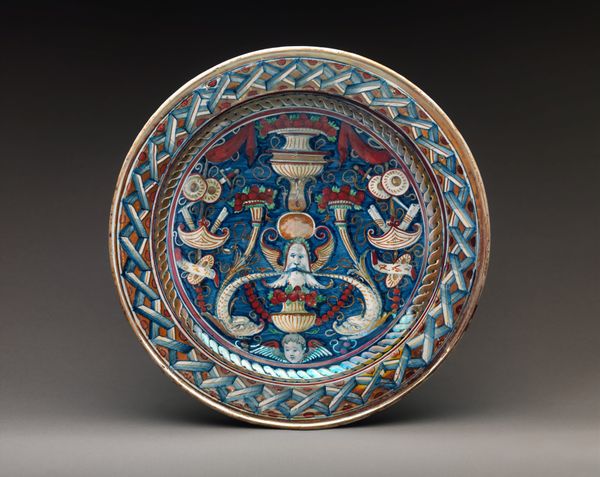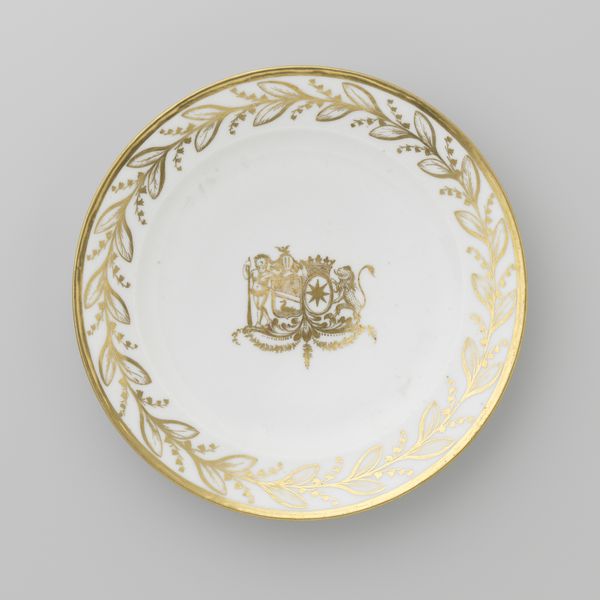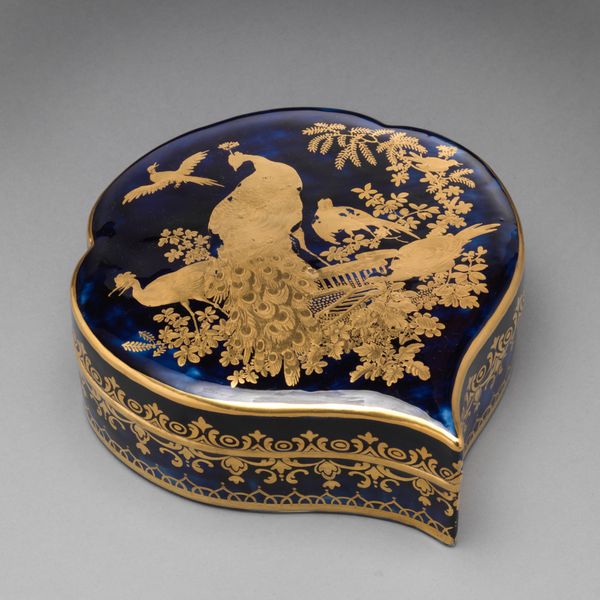
ceramic, earthenware
#
baroque
#
pottery
#
dutch-golden-age
#
ceramic
#
earthenware
#
stoneware
#
earthenware
#
decorative-art
Dimensions: height 4.5 cm, diameter 47.0 cm, diameter 31.0 cm
Copyright: Rijks Museum: Open Domain
This dish of unknown date was made by an anonymous artist. The visual codes here—the crown, the leafy branches, the monogram in the center—speak to status and authority. This piece was most likely made in Europe, where such visual language would have been quickly understood. The existence of objects like this is deeply tied to the politics of imagery. Dishes such as this were the exclusive property of wealthy families with social prestige to uphold. The very existence of this object speaks to a social hierarchy in which the accoutrements of daily life are used to convey messages about power. The meticulous detail and rich materials speak to the resources available to the commissioner of the artwork. To understand such an object better, one would need to delve into the history of heraldry, the decorative arts, and the economies of artistic production in the place and time it was made. Only then can we understand how this object functioned within its society.
Comments
rijksmuseum about 2 years ago
⋮
The gold decoration on this dish shows the crowned symmetrical monogram of Johan van Hoorn and Susanna Agneta van Outhoorn who married in Batavia in 1691. The monogram is upside-down. Dutch employees of the Dutch East India Company (VOC) could order Japanese lacquerware from the Dutch trading post on the Deshima peninsula in Japan.
Join the conversation
Join millions of artists and users on Artera today and experience the ultimate creative platform.
